The Close-Up Photographer of the Year Awards 2022 has just announced its winners and finalists. With over 9,000 pictures from 54 countries, the jury has selected the best photographs across eleven categories: Animals, Insects, Butterflies and Dragonflies, Invertebrate Portrait, Micro, Young, Fungi, Plants, Intimate Landscape, Underwater and Manmade.
CUPOTY celebrates the art of close-up, macro and micro photography and recognizes the talented photographers who capture the beauty and complexity of the world around us in stunning detail. Scroll down to see the hidden wonders of the natural world! After you're done, you can have a look at the winning shots from 2020 and 2021.
More info: cupoty.com | Instagram | Facebook | twitter.com
#1 1st Place In The Category Of Fungi: "Ice Encrusted Comatricha" By Barry Webb
"In January last year, following two days of freezing fog and sub-zero temperatures, I found some mature Comatricha, growing on an old fence post lying on a pile of discarded, rotting timber. I was attracted to the way the ice had encased the slime mould, creating strange, windswept, leaf-like shapes. The tallest one was only 3mm high, including the ice. The final image is the result of 55 focus-bracketed images combined in Zerene Stacker."
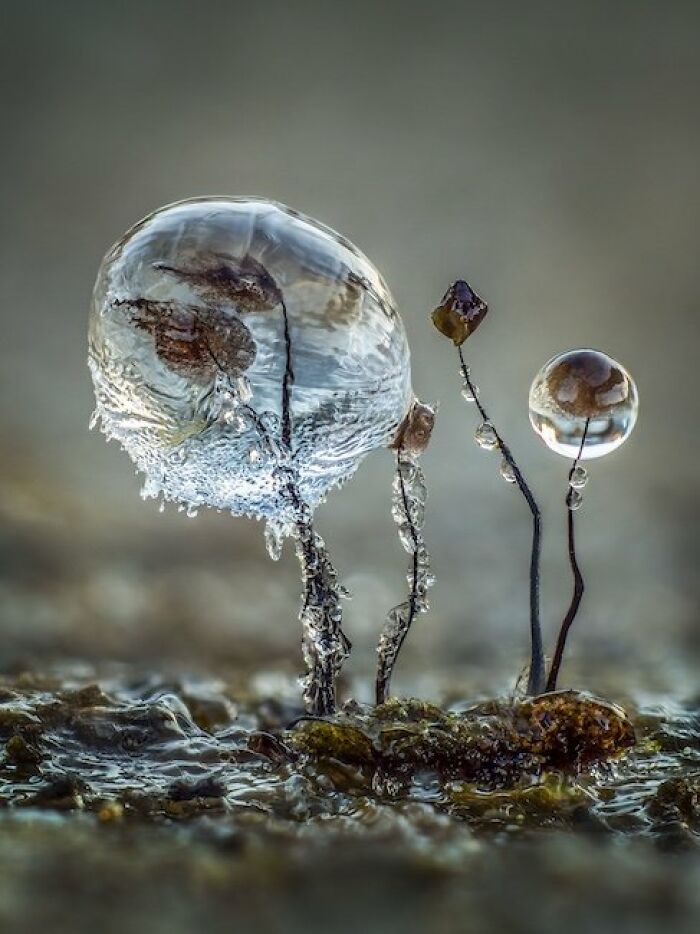
Image credits: cupoty.com
Bored Panda got in touch with the CUPOTY team to learn more about the competition and its winning images. Dan Calder, one of the founders of the Close-up Photographer of the Year, revealed that the competition was founded in 2018 by Tracy and him – a husband and wife team with a photography and editorial background. "We felt macro photography was being overlooked and wanted to set up an annual competition that celebrated close-up, macro and micro photography. Our main aim was to show the things that are often overlooked, or go unseen without the aid of a macro lens or microscope."
#2 Close-Up Photographer Of The Year 2022 And Winner In The Category Of Animals: "Nature’s Pitfall" By Samantha Stephens
"Northern Pitcher Plants (Sarracenia purpurea) are carnivorous, allowing them to survive in nutrient-poor bog environments. Here there is no rich soil, but rather a floating mat of Sphagnum moss. Instead of drawing nutrients up through its roots, this plant relies on trapping prey in its specialized bell-shaped leaves, called pitchers. Typically, these plants feast on invertebrates – such as moths and flies – but recently, researchers at the Algonquin Wildlife Research Station discovered a surprising new item on the plant’s menu: juvenile Spotted Salamanders (Ambystoma maculatum). This population of Northern Pitcher Plants in Algonquin Provincial Park is the first to be found regularly consuming vertebrate prey. For a plant that’s used to capture tiny invertebrates, a juvenile Spotted Salamander is a hefty feast! On the day I made this image, I was following researchers on their daily surveys of the plants. Pitchers typically contain just one salamander prey at a time, although occasionally they catch multiple salamanders simultaneously. When I saw a pitcher that had two salamanders, both at the same stage of decay floating at the surface of the pitcher’s fluid, I knew it was a special and fleeting moment. The next day, both salamanders had sunk to the bottom of the pitcher."
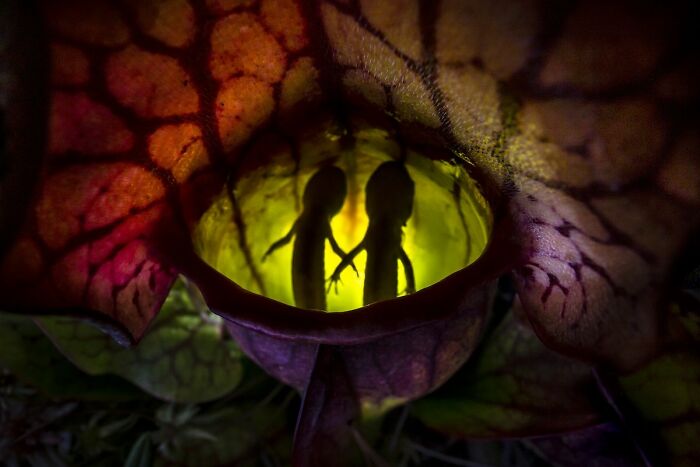
Image credits: cupoty.com
#3 3rd Place In The Category Of Underwater: "The Martian" By Pietro Cremone
"At night, many planktonic forms of animals come up from the deep sea, making it possible to take pictures of these fantastic critters. This is the larval form of a mimic octopus (Wonderpus photogenicus). It was taken while I was floating 300ft below the surface at Anilao, Philippines in complete darkness without any points of reference."

Image credits: cupoty.com
For the judges, the CUPOTY 04 had a pretty impressive line-up of experts. The jury included current Wildlife Photographer of the Year Karine Aigner, Amateur Photographer editor Nigel Atherton, photographers Sue Bishop, Frank Deschandol, Matt Doogue, Guy Edwardes, Wim van Egmond, Viktoria Haack, Ross Hoddinott, Darren Jew, David Maitland, Scott Portelli, Rachael Talibart and Robert Thompson alongside editors Kathy Moran, K Madhavan Pillai, Bart Somers and Keith Wilson. Click here for more information about the judges.
#4 1st Place In The Category Of Insects: "Intruder" By Anirban Dutta
"Before the start of the monsoon every year, some species of termite swarm in the late afternoon and early evening – this behavior is known as nuptial flight. One day I witnessed this event near a petrol pump in the town of Cooch Behar, India. There were thousands of termites drawn to the powerful street light and one black drongo. This bird spent almost 20 minutes swooping through the termites, snatching and eating them as it went. I shot multiple exposures to capture this event, which I had never seen before. Three frames were recorded and combined in the camera. The first one with a high shutter speed and in Kelvin white balance, the second with a high shutter speed isolating the drongo and the third with a slow shutter speed in Tungsten white balance."
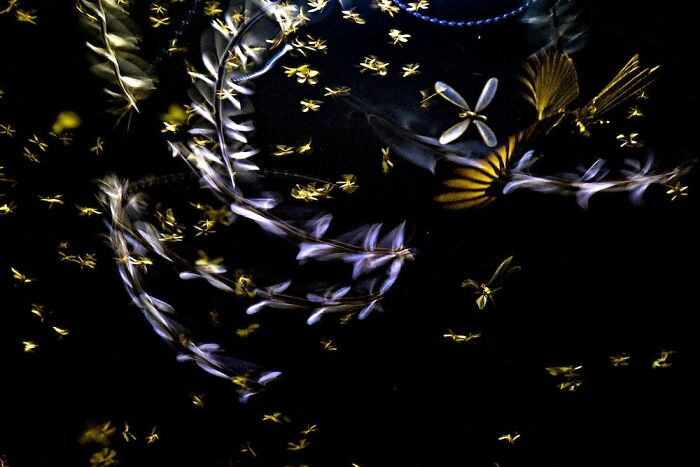
Image credits: cupoty.com
#5 2nd Place In The Category Of Underwater: "Beauty And The Beast" By Kate Jonker
"As I was shallowing up after a 25-metre dive at Steenbras Deep in the centre of False Bay, South Africa I came across a small patch of Mediterranean mussels. This invasive species, brought to the waters off Cape Town in the bilge of passing ships in the 1980s, is a beast, replacing the colourful marine life on shallower sections of some reefs with dark patches. Whilst I was investigating the impact these mussels were having on this particular section of reef, I found a beautiful Bluespotted klipfish (Pavoclinus caeruleopunctatus) perched amongst the mussel shells. He peered up at me cautiously, watching my attempts to battle the surge whilst photographing him with a shallow depth of field. My aim was to capture his beauty whilst softening the sharp edges of the mussels. A challenge not only due to the limited dive time I had remaining, but because of the surge that was washing me to and fro whilst I tried to focus on his eye."
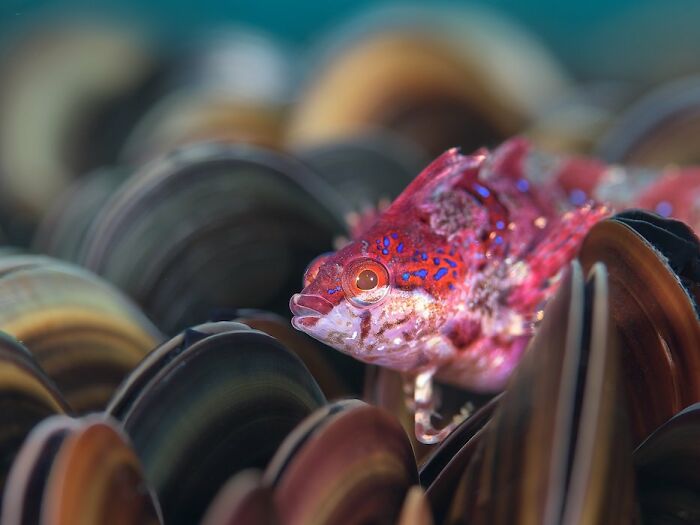
Image credits: cupoty.com
Dan shared that one of their tag lines when selecting the winners was “See the world anew” and that was the thought behind many of the jury's choices. "We were looking for images that stood out, astonished or showed us something we had never seen before. Pictures could be creative and artistic or they could show some interesting behavior (in the wildlife categories)."
#6 3rd Place In The Category Of Insects: "Little Naughty Draw Circle" By Minghui Yuan
"The beetle Aplosonyx nigriceps has developed a clever tactic to be able to eat the Alocasia macrorrhiza leaves and avoid the toxic alkalis that the plant secretes. It nibbles a 3cm circle on the leaves to cut off the toxin transmission before feasting inside the circle free of poison. This example was photographed in Nonggang National Reserve, Guangxi Province, China."
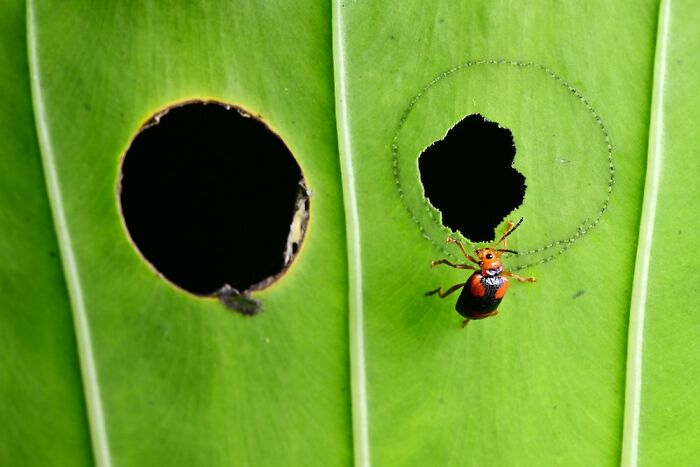
Image credits: cupoty.com
#7 3rd Place In The Category Of Butterflies And Dragonflies: "Common Winter Damselfly" By Kai Rösler
"This picture was taken in July, in a small nature reserve close to the town of Fribourg, Switzerland. The damselfly was sitting on a blade of grass, but flew away when I slowly approached, eventually placing itself on the tip of these grass spikelets. I managed to take some shots, trying to align my camera with the body of the damselfly. The constant moving of the grass caused by the wind and the insect’s movements made things tricky, but after a few seconds, despite the damselfly flying off, I had my shot."
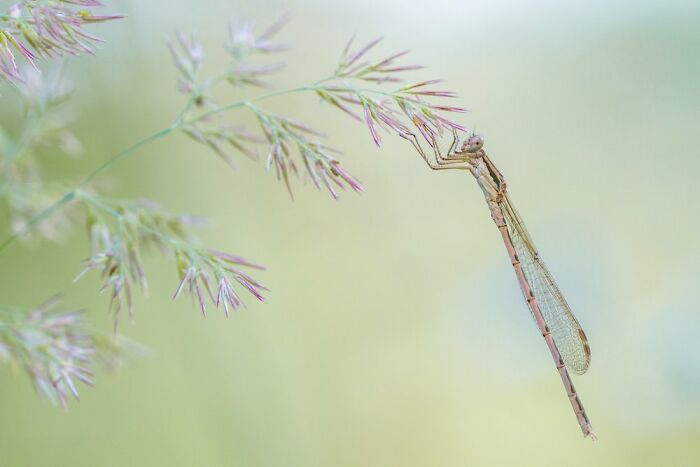
Image credits: cupoty.com
The overall winner of CUPOTY 2022 won a £2,500 (~$3,000) cash prize! Each of the 10 category winners received £300. The Young Close-up Photographer of the Year for those under 18 received a SIGMA 105mm F2.8 DG DN MACRO | Art lens and USB Dock. More information can be found here.
#8 3rd Place In The Category Of Animals: "A Tale In The Sand" By Paul Lennart Schmid
"After three luckless attempts of searching for Sahara sand vipers (Cerastes Vipera) in rainy conditions, we finally had a dry day and night that brought us success. We followed the tracks of this snake for over a hundred meters through the dunes of the Negev desert in Israel. At times, our eyes were almost directly over the sand so as not to lose the trail. We even saw that it had crossed our foot tracks from earlier in the night. After quite a while we finally found this specimen digging itself into the sand to get into an ambush position, right next to the tracks of a dune gecko (Stenodactylus petrii) that had turned around at the right moment before becoming a meal."
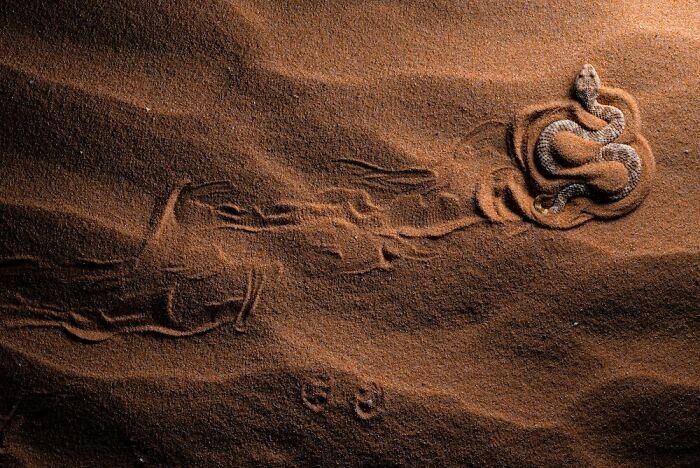
Image credits: cupoty.com
#9 1st Place In The Category Of Intimate Landscape: "Frequency" By Mike Curry
"This is a reflection of a building at Canary Wharf in London taken in November. The water was moving in a very fluid way and I was there to try out my new Sony DSC-RX100M6 – I was particularly keen to test the camera’s fast burst and slow motion video modes. I was struggling to get it to focus on the water’s surface, but after about two hours of failed attempts it suddenly worked, and the results were amazing!"
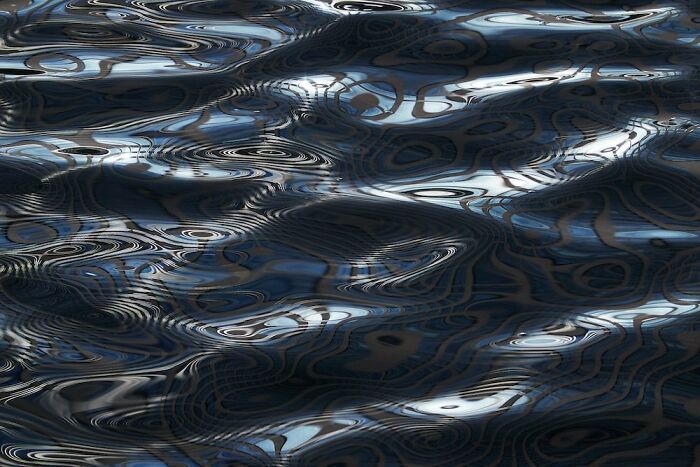
Image credits: cupoty.com
"The competition is open to absolutely everyone from anywhere in the world. We had entries from 54 countries this year, from hobby photographers, professionals, scientists, microscopists, artists and conservationists."
So, if you're interested in participating, CUPOTY 05 will open for entries in March 2023!
#10 3rd Place In The Category Of Fungi: "Slime Mould Didymium Squamulosum On Holly Leaf" By Andy Sands
"Many happy hours in winter can be spent crawling around under a holly tree searching for slime moulds. This tiny slime mould, around 1mm tall, often grows in leaf litter. These three were found growing along the edge of a holly leaf in a Hertfordshire woodland in January. The challenge photographing slime moulds such as these is their tiny size. I used my 60mm Macro lens with three extension tubes mounted between the lens and camera to achieve the required magnification. I then used focus bracketing to take a series of images in natural light, 28 in total, and combined them in post production at home using Zerene Stacker."
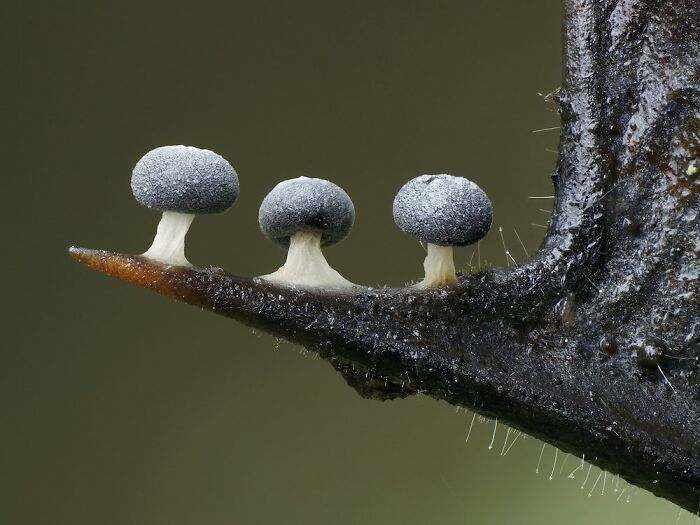
Image credits: cupoty.com
#11 2nd Place In The Category Of Butterflies And Dragonflies: "Atlas Moth" By Uday Hegde
"This beautiful Atlas moth (Attacus atlas) was found during my daily walk in our areca nut plantation in Sirsi, India. As our plantation is surrounded by evergreen forest a lot of frogs, snakes, insects and butterflies take shelter there. These huge moths often have a wingspan that extends beyond nine inches. I wanted to show the moth in its habitat, so I decided to shoot this picture with a wide-angle macro lens. I set-up the camera, tripod, flash and trigger away from the moth so that it would not get disturbed. Once I felt happy with the set-up I placed my camera near the moth, composed the frame and took 5-6 shots."
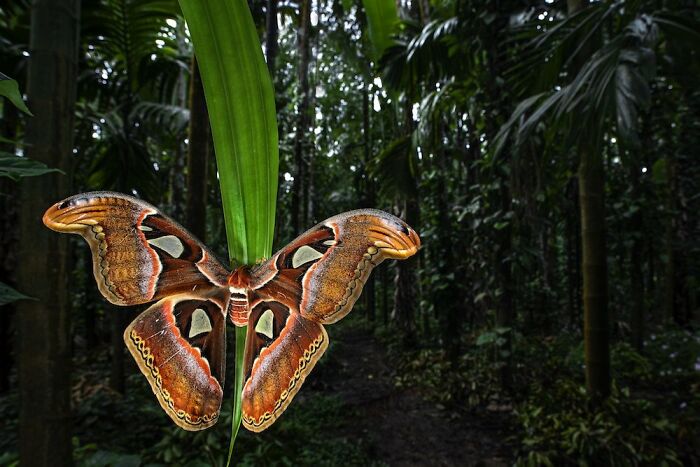
Image credits: cupoty.com
#12 1st Place In The Category Of Underwater: "Little Predator" By Viktor Lyagushkin
"This is a Lucernaria quadricornis (Stauromedusae), a stalked jellyfish, photographed beneath the ice of the White Sea in Russia – the only freezing sea in Europe. The green colour of the water is a sign of spring as algae grows. The 'leg' of the jellyfish helps it to attach to a stone or seaweed. Its tentacles project up or down, waiting for prey. If its hunt is successful, it catches the prey and collapses its tentacles into a fist. If the hunting site is no good, Lucernaria walks away on its “leg” or sometimes its 'hands'."
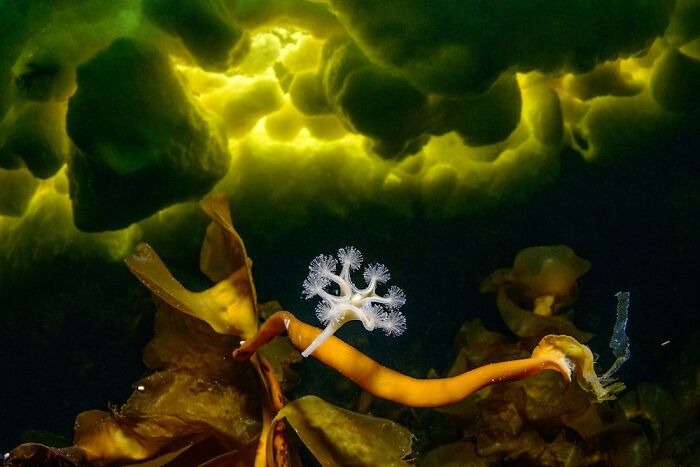
Image credits: cupoty.com
#13 3rd Place In The Category Of Plants: "Sun Worshippers" By Henrik Spranz
"Three greater pasque flowers (Pulsatilla grandis) right after sunrise in early spring near Vienna – with Sahara dust in the air. It's a rare occasion and always gives an unreal light condition."
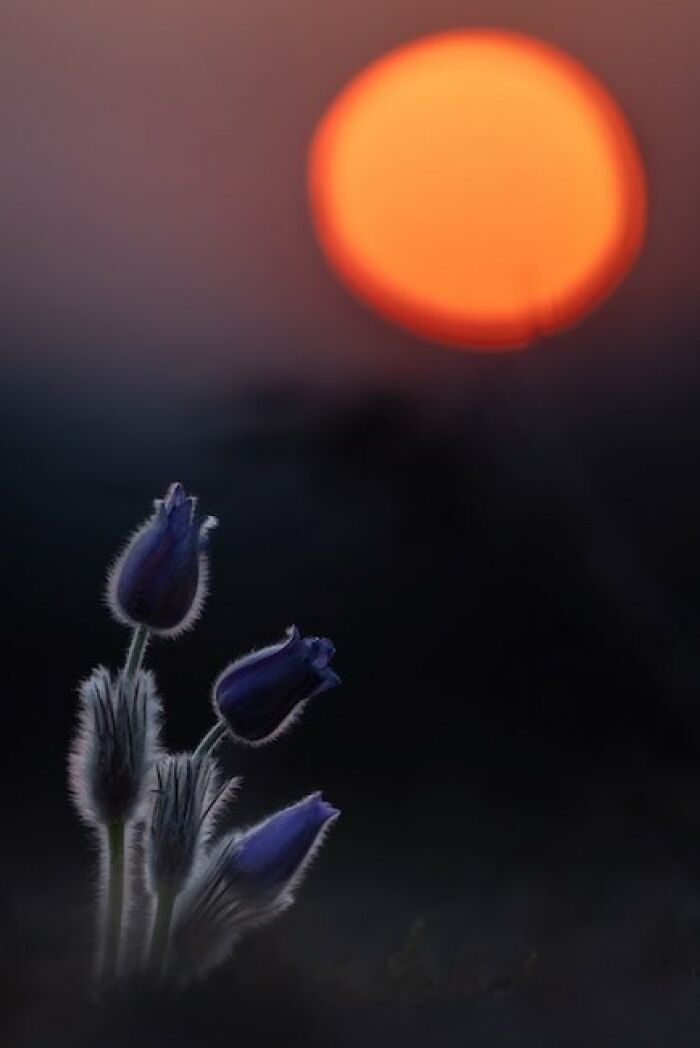
Image credits: cupoty.com
#14 1st Place In The Category Of Invertebrate Portrait: "Mayan Derriere" By Jamie Hall
"This Triangular Spider species (Arkys curtulus) is an ambush predator, not a web-based hunter like most. To hunt its prey, it sits compact and curled up on a leaf, mimicking bird poo or other bio-debris. Balanced abdomen-side down, eyes up, it looks to the sky and watches for an unsuspecting fly or other insect to wander onto the leaf. The abdomen on this species has some very pronounced and interesting markings, which reminded me of the Mayan carvings on rocks and stone. This individual was photographed in a conservation park in Brisbane, Australia."
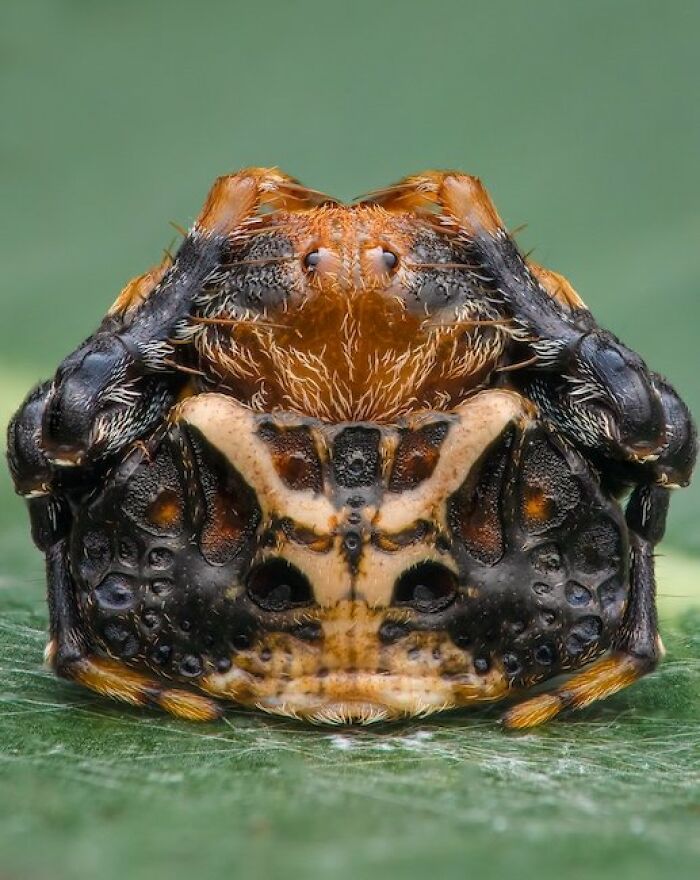
Image credits: cupoty.com
#15 2nd Place In The Category Of Intimate Landscape: "Artwork Of Nature II" By Klaus Axelsen
"A July capture from Marmorslottet in Nordland, Norway. The rock formations and the water flowing through it invited an intimate capture of the details and structures of these unique rock formations and potholes."
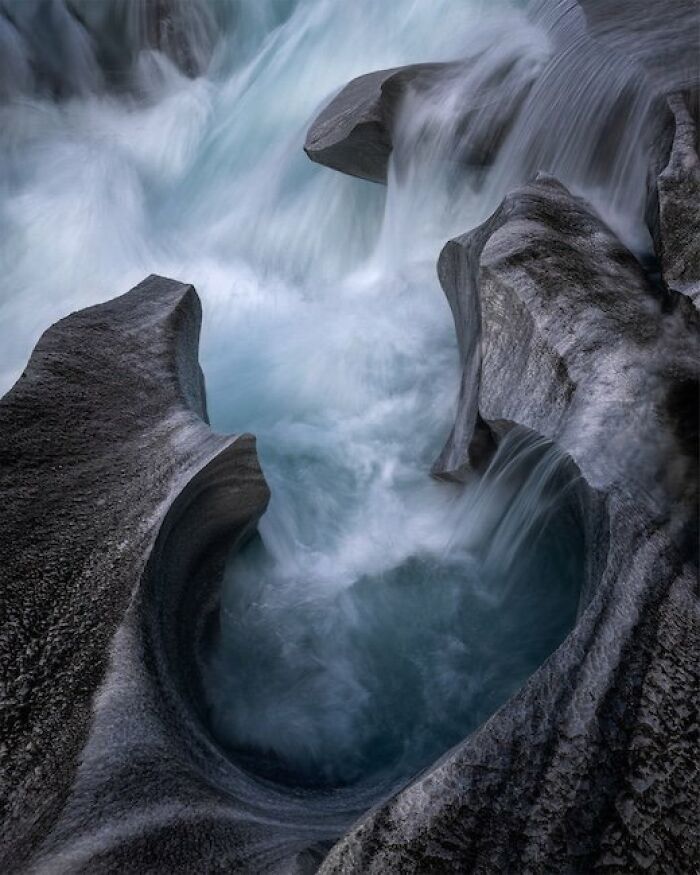
Image credits: cupoty.com
#16 1st Place In The Category Of Micro: "Batrachospermum Red Algae" By Marek Miś
"I took a sample of Batrachospermum (a kind of red algae) from a small river in Wigry National Park, Poland. Although it has natural beauty, it doesn’t look great using bright-field illumination. However, by combining polarised light and darkfield techniques I managed to get a colourful and interesting picture. It was challenging to show more than one or two “twigs” of algae, because even a 4x microscope objective shows too small a part. To capture it properly, I made a panorama consisting of nine images stitched together during post-processing. To expand the depth of field, which is very shallow using a microscope, each of the nine images consist of several frames combined in one output image in Helicon Focus. The final image is the result of combining more than 100 separate shots."
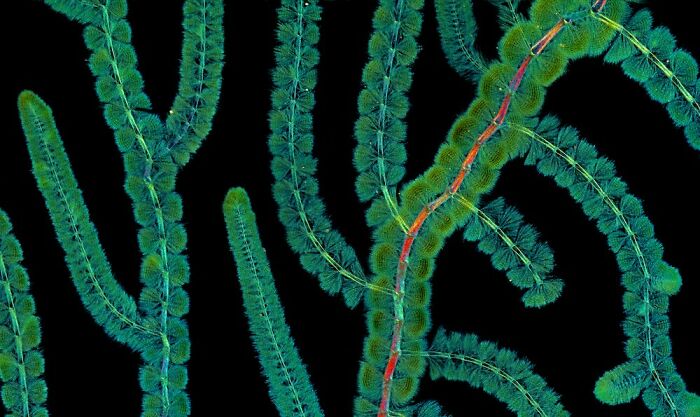
Image credits: cupoty.com
#17 2nd Place In The Category Of Young: "Demoiselle Wing" By Nathan Benstead
"The wing of the damselfly is incredibly detailed and delicate. The banded demoiselle (Calopteryx splendens) males have dark coloured bands on their wings, which I decided to try and photograph on my trip to the New Forest, Hampshire back in June. After finding a stunning male individual I set my lens to 2x magnification to get as close as possible and took the shot. You can see the drops of dew on the wing as the image was taken very early in the morning. I then left the demoiselle to dry off and warm up in the early morning sun."
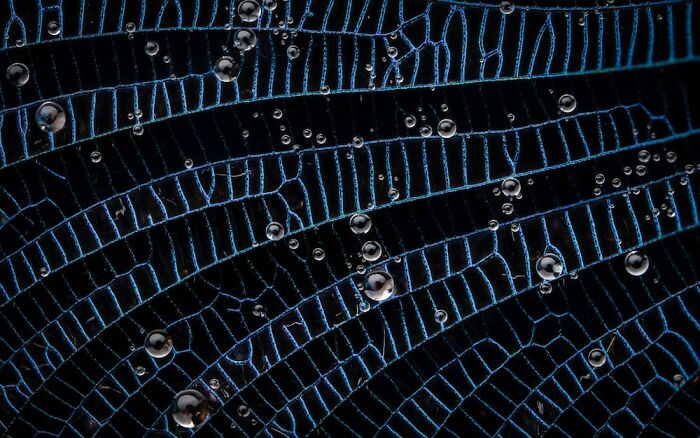
Image credits: cupoty.com
#18 3rd Place In The Category Of Young: "Doner Kebab And Pizza" By Anton Trexler
"In Berlin there is a lot of urban wildlife, such as this population of starlings living at Alexanderplatz. When my photographer friend Richard Pohl and I tried some creative photography we noticed the birds eating the leftovers from humans. I positioned my wide-angle lens on the table and triggered the camera wireless when the starlings came close to it. With this picture I want to show the coexistence between human and nature and how interesting and diverse this relationship can be."
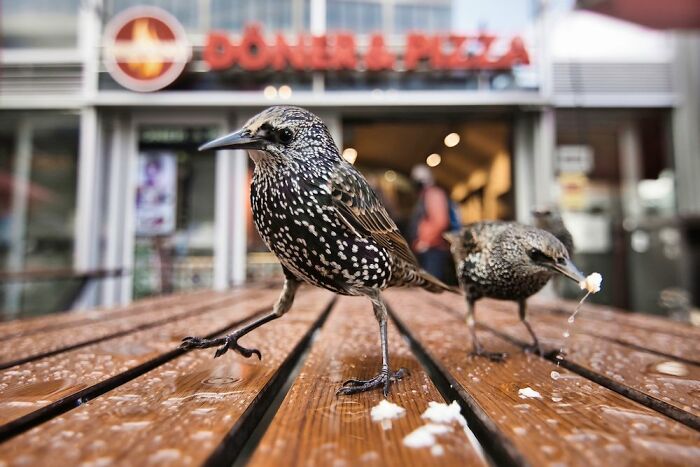
Image credits: cupoty.com
#19 1st Place In The Category Of Plants: "Next To My Tree" By Sébastien Blomme
"Snake’s-head fritillary is one of my favorite flowers. This one was taken in the city of Toulouse, France. It usually grows on wet meadows but can also be found in forests. In this image, I wanted to introduce some context, but keep the flower as the center of interest. I managed to get a tree in the background and decided to keep it out of focus so that its shape is only suggested."
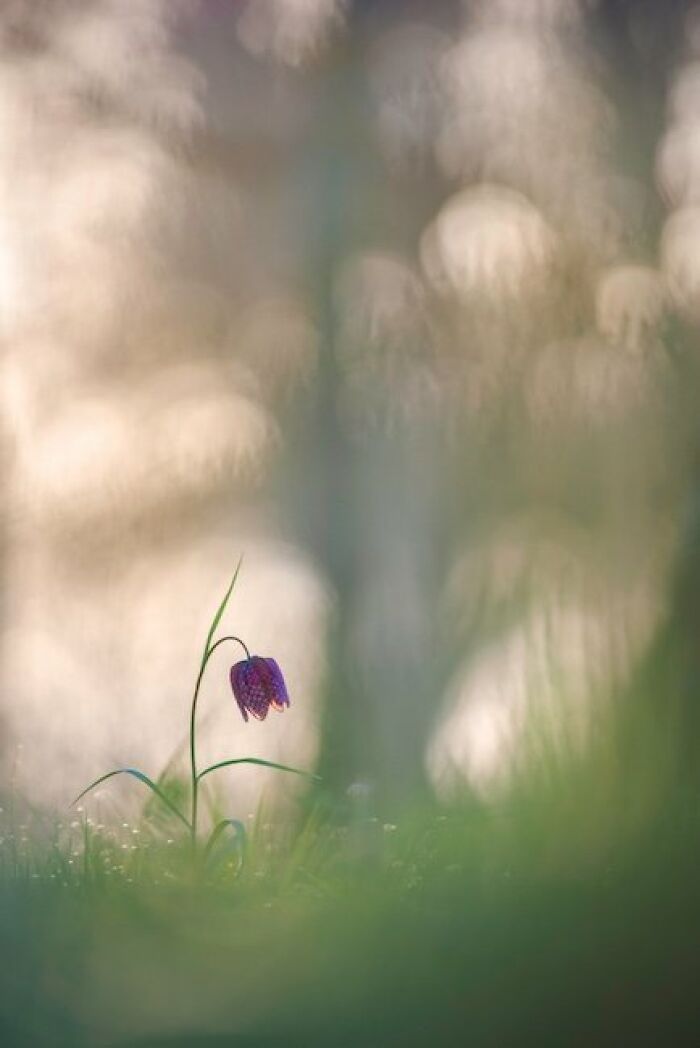
Image credits: cupoty.com
#20 3rd Place In The Category Of Invertebrate Portrait: "Shining Snail" By Alex Pansier
"A common snail on a blade of grass, taken with a flash, so that the detail can be seen nicely against a dark background."
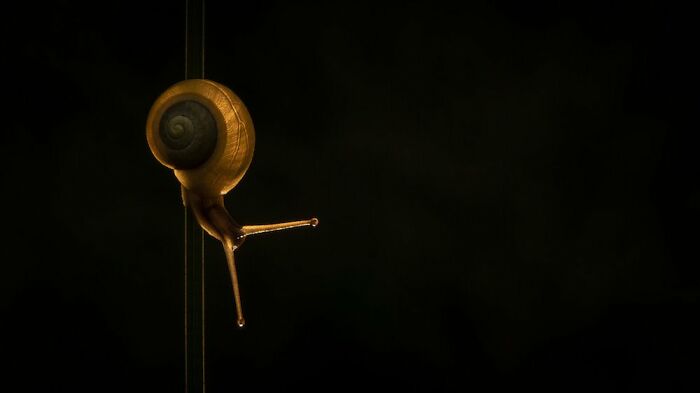
Image credits: cupoty.com
#21 3rd Place In The Category Of Intimate Landscape: "Sea In Fan" By Angelo Richardson
"The steady trade winds and the waves they produce, make the rugged northeast coast of the island of Aruba, in the Dutch Caribbean, a true beachcombers paradise. These sea fans are one of the most common jewels you can find there along the beach. I dipped one into the sea and photographed the waves crashing on the rocks through it. The tiny seawater lenses captured a different view of that same moment."
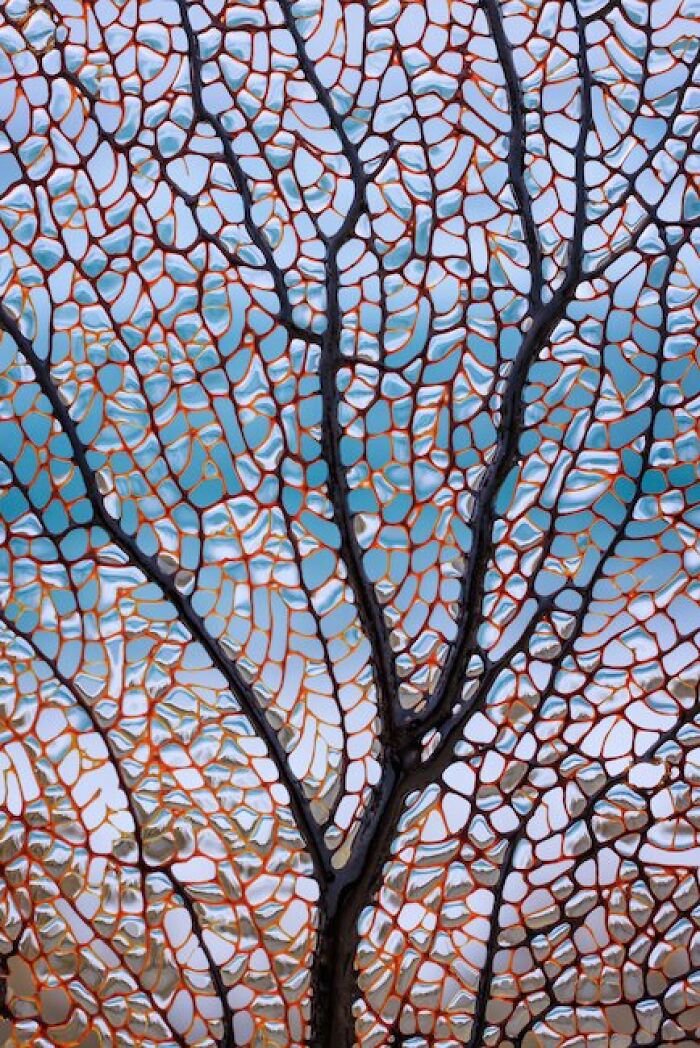
Image credits: cupoty.com
#22 1st Place In The Category Of Young: "Hemitrichia Calyculata" By Nathan Benstead
"I was walking through my local woodland, inspecting rotten logs and sticks last winter, when I came across a log covered in slime mould fruiting bodies or sporangia. I set up my camera gear and focused on a small cluster amongst the moss."
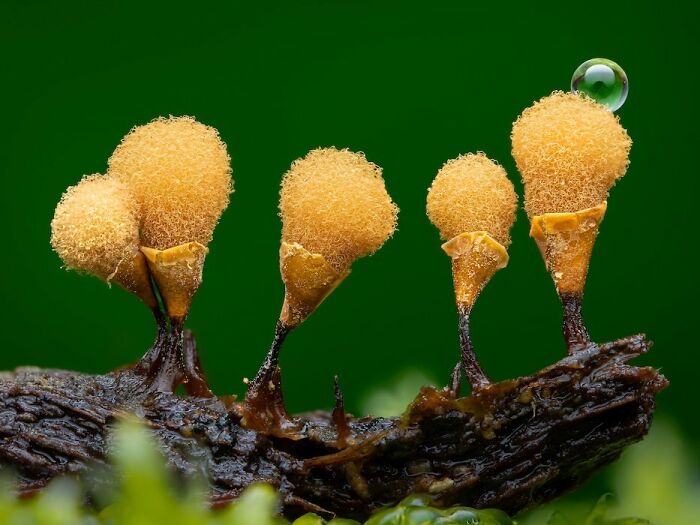
Image credits: cupoty.com
#23 2nd Place In The Category Of Insects: "Violet Ghost" By Bernard Van Elegem
"This ground beetle Carabus germari is locally common in forests of Italy and Slovenia. The species is mostly active during the night, but when sexually active the beetles can also be found running or foraging during the daytime. I found this beetle running along a small forest road one hot July evening in Boca de Piombo, Albaville, Italy. I have taken several hundred images of running ground beetles over the years, but it is extremely difficult to get a decent image. The beetle often moves in several directions while he runs: his body moves up and down and often from left to right or vice versa… Moreover, it is very difficult to keep the beetle in focus while following him with a macro lens that has a very small depth of field. In this instance, I noticed that the beetle was running through sunny patches every so often. I knew this could have the same effect as a fill-in flash, but with the beautiful, natural colors of the evening light. My aim was to have an image showing enough movement to illustrate the speed of the beetle while illustrating the elegance of the beetle with its superb violet and turquoise colors. Much to my surprise one image came close to what I had in mind!"
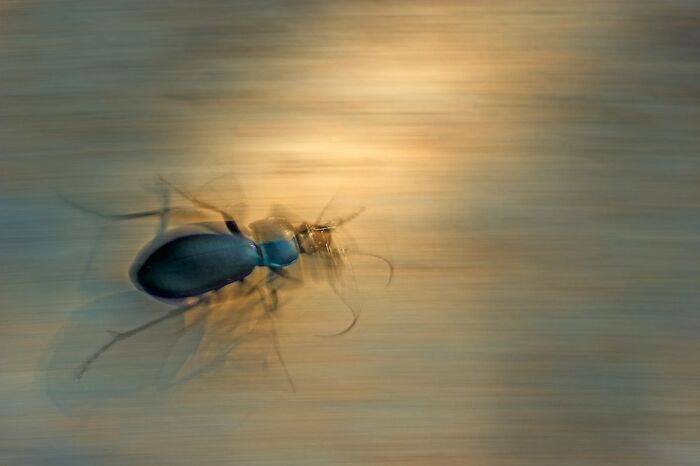
Image credits: cupoty.com
#24 3rd Place In The Category Of Micro: "Schistidium Capsule" By Harald Cederlund
"I am fascinated by the Schistidium mosses. The intricate capsules look like tiny flowers when viewed up close. With the peristome teeth extended, the capsule is only about 1mm wide, yet from afar the mosses often give a drab blackish impression. They thrive on exposed surfaces such as rocks on the shoreline or forest edge and persist unnoticed on concrete slabs in city locations. I picked this one up from a concrete foundation close to where I live in Ulleråker, Sweden and shot it in my living room. By combining long exposures with a flash I could create some ambience and not just a black background."
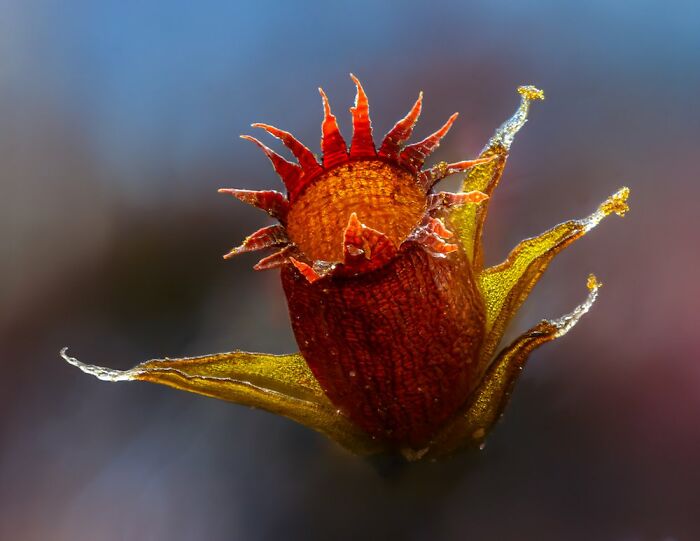
Image credits: cupoty.com
#25 2nd Place In The Category Of Animals: "The Footprint Friend" By Juan J. Gonzalez Ahumada
"As this pond dried up near Monda, Spain, hundreds of miniature toads, barely a centimeter in size began to wander around seeking refuge. A pair of them found safety in the huge paw print of a mastiff that was left in the mud when it came to quench its thirst at the water’s edge."
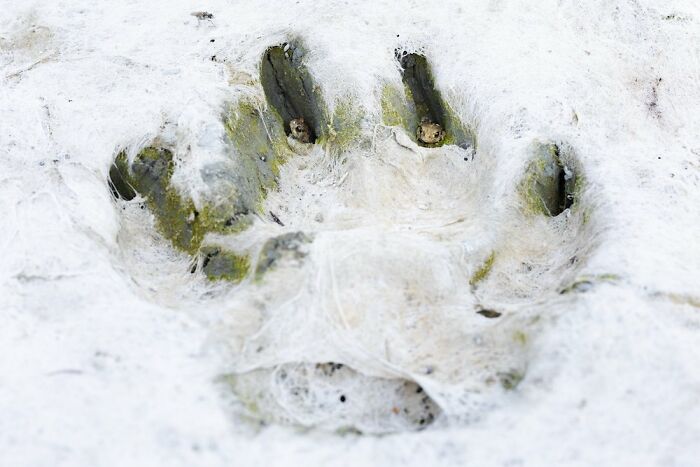
Image credits: cupoty.com
#26 2nd Place In The Category Of Invertebrate Portrait: "Gordian Worm Knot" By Ben Revell
"It was early autumn as a friend and I were exploring the rainforest creeks of the Australian Sunshine Coast Hinterland by night when we stumbled upon this remarkable scene. Emerging from the abdomen of a fire back huntsman spider was this long cylindrical worm. I had read about these horrific creatures before, but this was the first time I had witnessed a Gordian Worm. Named after the impossible knots they form when out of water, these parasitic worms thankfully only infect invertebrates. After hatching, their microscopic larvae swim free in water and are ingested by drinking insects. They grow inside the stomach of the insect until they move through the stomach lining and begin devouring the non-vital organs of its victim. Reaching maturity, the worm releases a mind controlling agent, forcing its now zombie like host to walk to water where it bursts through the abdomen and drops into the water to complete its life cycle."
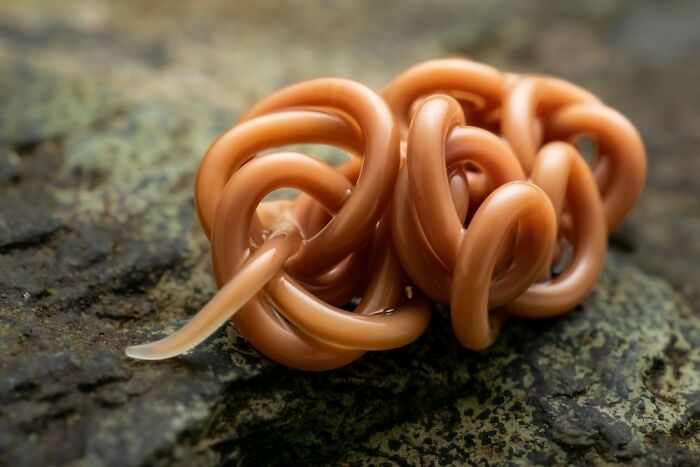
Image credits: cupoty.com
#27 2nd Place In The Category Of Plants: "Thawing Beauty" By Jay Birmingham
"I am fortunate enough to live near a location where snake’s head fritillaries grow natively. Broad Meadow, near Tamworth in the UK, floods regularly and creates the ideal conditions for these beautiful flowers. The flowers move easily in the wind, so I waited for a morning when there was no breeze. There had also been an overnight frost. This combined with the mist and rising sun, created some beautiful conditions for photography. In order to maximize focus and make sure the flower stood out against the background, I shot wide open at f/2.8 using a 180mm macro lens. I then stacked a few images together where I had focused on different parts of the flower."
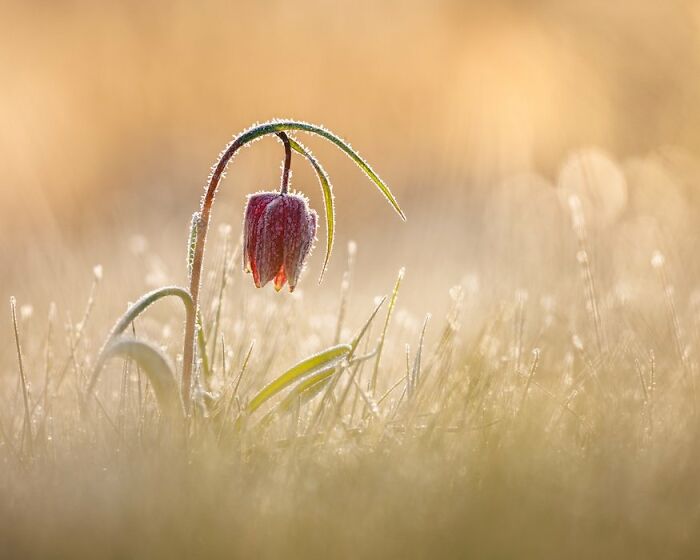
Image credits: cupoty.com
#28 2nd Place In The Category Of Fungi: "Scarlet Waxcap In Early Morning Dew" By Jeremy Lintott
"Arriving early on a beautiful misty morning to meet a fellow enthusiast for a day of fungi photography at Ebernoe Woods last October, I spotted a large number of waxcaps growing around the periphery of a nearby cricket pitch. The whole area was covered in spider webs and early morning dew creating an ethereal scene. Using a small beanbag to rest my camera at ground level I took a series of 12 focus-bracketed images at a wide aperture. This enabled me to achieve maximum detail in the waxcap whilst maintaining the soft back- and foreground."
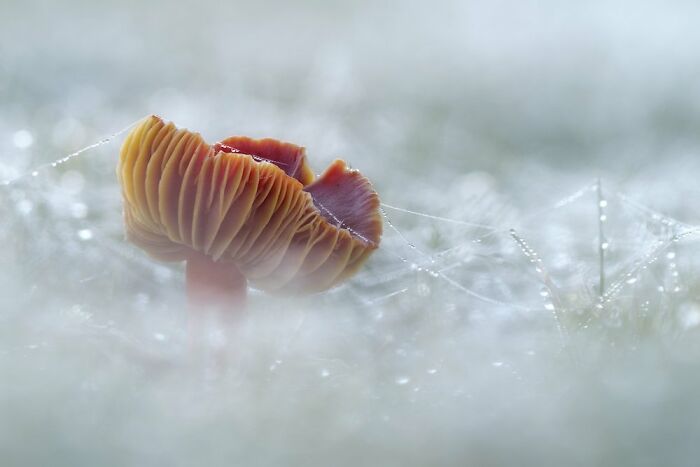
Image credits: cupoty.com
#29 1st Place In The Category Of Manmade: "Oil & Water 44" By Matt Vacca
"This picture was captured as two drops of oil were merging. I’m intrigued by polarity and experimenting with oil and water has become a rich source of abstract expression. The symbiotic relationship that evolves from naturally opposing elements has become metaphoric for me. I am constantly learning and finding new inspiration, as I watch and continue to be fascinated by the dance that plays out through a macro lens."
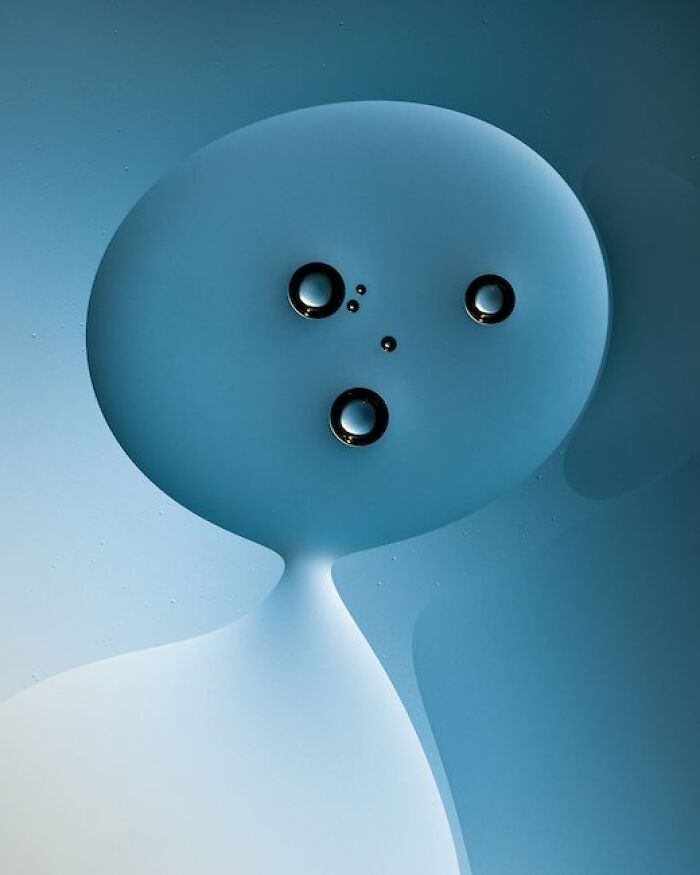
Image credits: cupoty.com
#30 2nd Place In The Category Of Micro: "Pollen Tubes Growing Through The Pistil Of Arabidopsis Thaliana" By Jan Martinek
"In this fluorescence microphotograph, you can see yellow pollen tubes growing through the blue pistil of Arabidopsis thaliana (Thale cress) to fertilise the eggs. This sample was chemically cleared, so the plant tissues become partially transparent, and the pollen tubes growing inside the pistil can be seen."
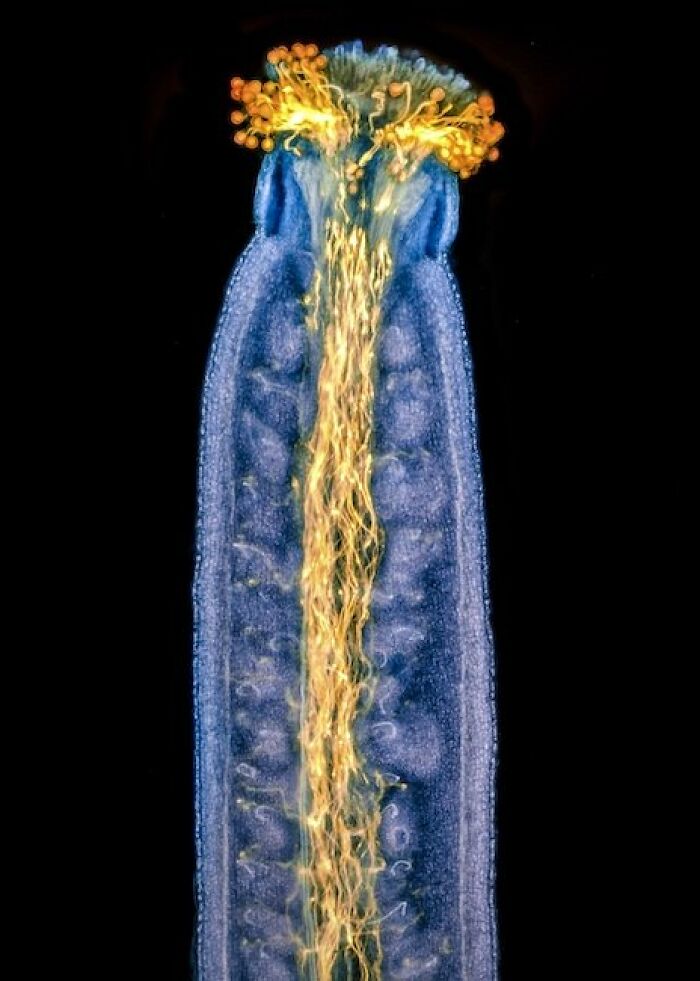
Image credits: cupoty.com
#31 3rd Place In The Category Of Manmade: "Colour Study 35" By Paul Gravett
"Despite their painterly appearances, each Colour Study starts with a camera and a series of photographs of papers and colour acetates, layered three to five deep on a stack of glass shelves. The images are layered and blended in the computer to create abstractions that reference contemporary art, including pointillism, colour fields, transparencies, collage, and painterly techniques. The hallmark of this experimental process is unpredictability and discovery, leading to startling and unexpected images that blur the boundary of photography and contemporary art, and trick the eye and test our assumptions about photography."
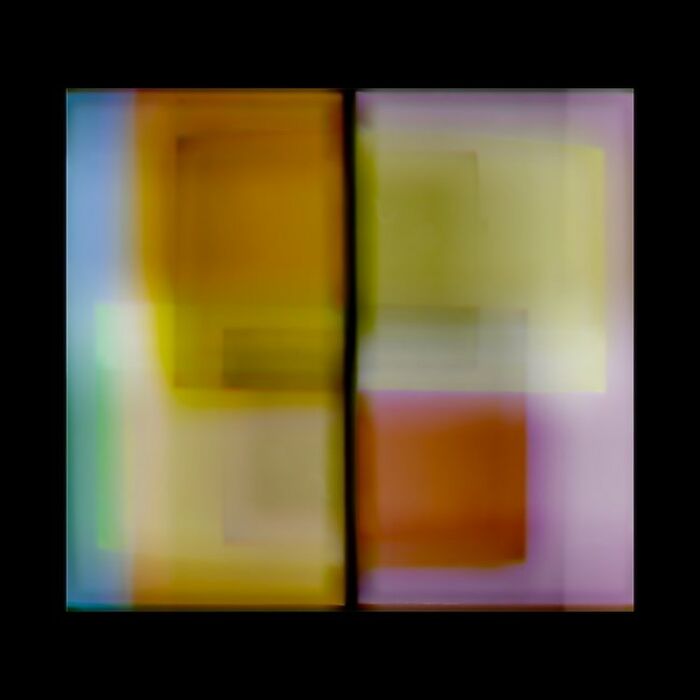
Image credits: cupoty.com
#32 1st Place In The Category Of Butterflies And Dragonflies: "Veiled" By Wim Vooijs
"I found this dew-covered male Banded Demoiselle on a reed stem among the streams near my hometown, Ede in the Netherlands. Banded Demoiselles are easy to approach as they rest and dry in the early morning. I tried to find an angle that would produce bokeh bubbles in the warm light, creating the atmosphere that I desired in the picture. I like to emphasise the beauty of these insects by showing their strength and vulnerability. I’m not after a record shot, more an emotional portrait – maybe this is due to my background as a portrait photographer."
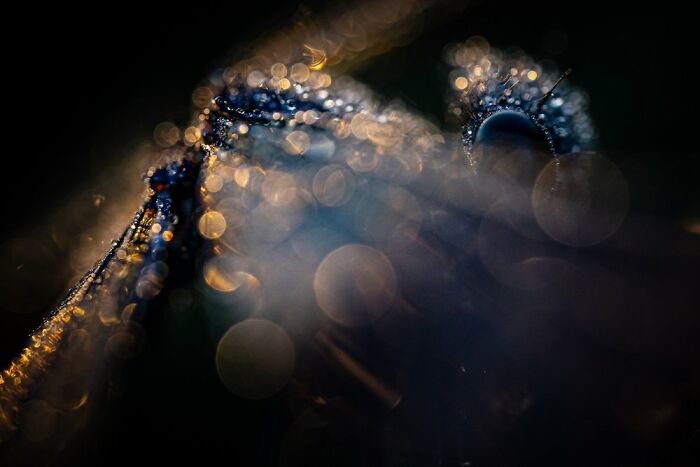
Image credits: cupoty.com
#33 2nd Place In The Category Of Manmade: "Fishing Nets" By Nigel Halliwel
"Many landscape photographers with an interest in manmade and abstract subjects will know of Dungeness on the Kent Coast, UK. It was there that I came across this bundle of fishing nets. The striking blue colour initially drew me to this composition. But as I looked more closely the S-shape coming out of the lighter blue net convinced me to set-up my large-format Ebony camera and capture a couple of frames of Velvia 50."
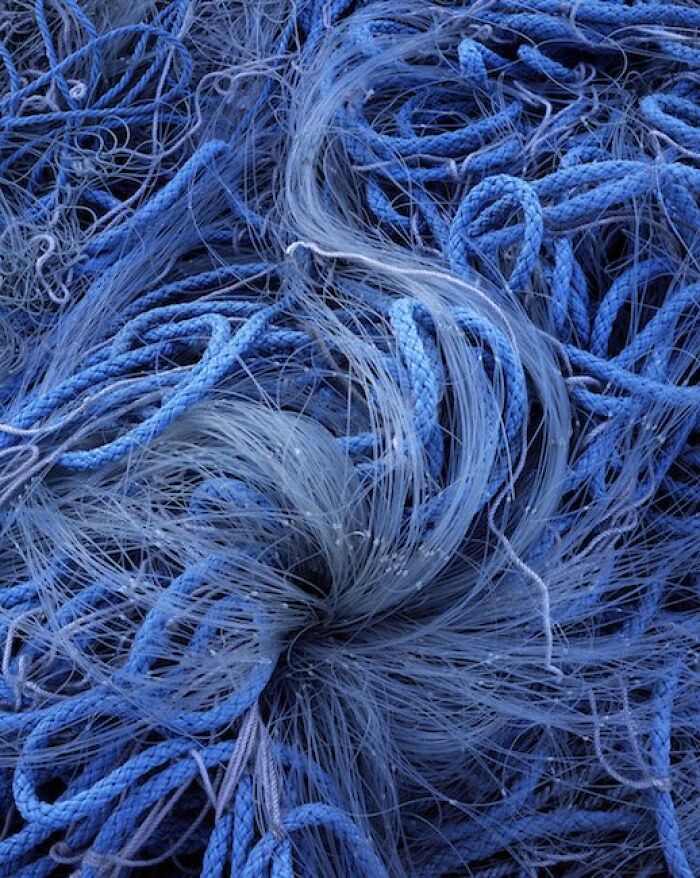
Image credits: cupoty.com
from Bored Panda https://ift.tt/IjfAJZk
via Boredpanda